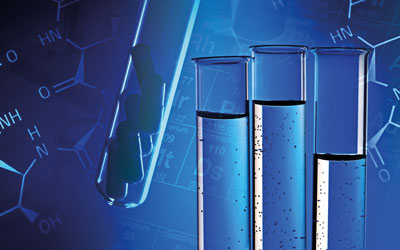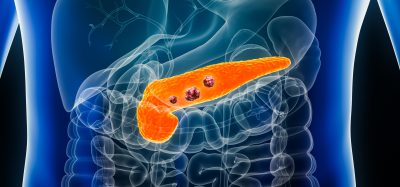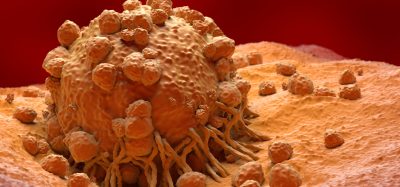From hype to hope: challenging the norm in lead discovery
Posted: 10 June 2015 | Andy Merritt (MRC Technology Centre for Therapeutics Discovery)
From the beginning of time in the drug discovery world, the integration of disciplines has driven the identification of new lead molecules. Chemists, pharmacologists and biologists work together to understand a disease state and how to perturb that state back towards a normal healthy condition. However, in the early days of drug discovery, before the more recent revolutions in understanding of molecular biology and the pathways that underlie the biology of a system, integration was often at the level of observational pharmacology.

For example, in early anxiolytic developments, a question posed might be: “If I give this compound to an animal, will it affect behaviour?” As the understanding of receptor pharmacology developed, the questions became more focused. For example, with beta blockers, one might ask: “Can I measure change in an in vivo model associated with a disease state using compounds closely related to natural effectors?”
The rapid evolution of molecular biology during the latter years of the 20th century supported the development of more specific assays in a reductionist approach focusing on single points of intervention in a disease state. This focus on single targets (enzymes or receptors, including the identification and classification of multiple subtypes) was coupled to rapidly developing automation capability and in combination led to the development of high throughput screening (HTS) in the 1990s.1
To supply the demands of HTS, chemistry rapidly developed technologies to deliver large libraries of compounds. This combination, often referred to as the industrialisation of drug discovery, became the mainstay of drug discovery programmes through the ‘90s. However, it has been well documented2 that investment in this mechanised approach did not lead to the predicted successes – drugs were not falling straight out of screens. As the investment in technologies rose, the productivity of the industry remained at best level. One contributor to that lack of success was a by-product of the focus on technologies – the same cross disciplinary teamwork that had supported the early development of drugs was marginalised as individual groups turned their full attention to the technology developments fuelling the increased throughput.
One outcome of these experiences has been a realisation that efforts need to turn back to strategies with a proven record of success. However, it is worth noting that many aspects of high throughput approaches have become standard. Most chemistry hit-to-lead optimisation programs use techniques, tools and equipment developed out of the industrialised processes, and in areas such as protein epitope mapping, high throughput chemistry and mixture screening is still highly effective. The idea of very large library diversity screening still remains active through technologies such as DNA encoded libraries, where the decoding challenges of the previous strategies have been addressed, whilst capacity for production has increased by several orders of magnitude.3 However, whether an increase in scale to the 109-1011 number of compounds accessible using DNA encoding methods will prove to be more effective than previous library approaches in a biologically active world of 1060 possible compounds remains to be seen.
Tablets of stone
The realisation that the industrialisation of drug discovery was not delivering was quickly tied to a focus on what we had lost from earlier approaches to drug discovery. The move towards chemistry-driven large libraries had been enabled by an emphasis on reactions with reliable yields, and encompassing as wide a range of functional groups as possible. This focus inevitably led to the consideration that chemical utility of a reaction and the molecular economics of building block availability was more important than the potential drug-like properties of any products.
Given the need to focus on robust reactions it is no surprise that a large number of earlier libraries were merely variations on a theme of amide formation and dehydration; later developments of C-C bond forming reactions based on transition metal catalysed reactions added new variety but it was still focused around accessible building blocks and a limited range of widely applicable robust chemistry. Any focus on the pharmacological relevance or hard earned medicinal chemistry experience was downplayed.
It is in more recent years that the combination of medicinal chemistry experience with high throughput technologies has enabled more intelligent (albeit smaller scale) libraries to be developed and applied. Approaches to defining privileged structures and significant use of calculated properties have combined to provide more valuable focused sets of compounds. However, the heyday of large synthetic libraries for chemistry screening sets development has probably seen it biggest challenge from the development of commercial suppliers of large number, ‘cherry pickable’ compound collections. Why develop and build a library in-house, with inherent built-in similarity when it is possible buy tens of thousands of individually selected compounds at relatively low cost?
Other concepts developing in parallel during this period have also had a significant impact on compound collections. The Lipinski ‘Rules of five’ are a clear example of this.4 Based on an analysis of in-house (Pfizer) and literature studies, a set of rules focused on determining (and eliminating) the risk of poor drug absorption was developed that has become one of the fixed tablets of stone in the lexicon of drug discovery. Further refined through hit-like and lead-like analyses, rules of three etc., these aspects along with other parameters such as polar surface area and efficiency indices have become touchstones in drug discovery, parameters that discovery teams (and management) can easily track and measure. These generate boundaries that a normal drug discovery programme crosses only with trepidation.
But what is meant by ‘normal’ drug discovery? The aim of most small molecule drug discovery programs, independent of the specific disease target, is to end up with a tabletted oral formulation, preferably with once-daily dosing. But is this ‘tablet of stone’ in itself a restriction, forcing the design of compound pharmacokinetics and pharmaceutical formulation down paths designed to deliver only that profile?
‘We won’t get fooled again’
Given the experiences of the industrialisation of drug discovery processes, one might ask why anyone would want to step outside the medicinal chemistry comfort zone as defined by parameters designed to deliver oral once daily dosing. However, some conditions may accommodate compounds administered by approaches other than the standard tablet one. For example, any condition requiring hospitalisation during the main period of treatment allows for alternative dosing strategies to an outpatient or community-based treatment regimen. Options for injectable delivery or more intensive oral regimes are possible; however as we move more towards care in the home and social setting, it is not obvious how many therapies are worth developing when they may be applicable only in the most controlled of therapy settings.
Single components of the ‘tablets of stone’ may be more flexible depending, again, on target indication. For example, if greater ‘on target’ potency in a series is achievable though modifications that also lead to higher lipophilicity, then this may also trend towards increased off-target general toxicity. This is unlikely to be tolerable in a treatment for chronic non-life threatening conditions but for a late stage cancer treatment may be much more acceptable.
Some targets may inherently need more than can be achieved within the parameters defined by the once-a-day oral profile. Novel protein-protein interaction (PPI) targets may require larger molecular weight drugs to address the surface interactions that are the summation of a number of small interaction contacts. Some PPIs have been drugged by small molecules that hit hotspots that are key anchor binding motifs between proteins; others by forcing one protein into a subtly different conformation that prevents binding of its protein partner; but these appear to be relatively rare events, and it seems likely that many PPIs will need larger interface blocking compounds.5
Perhaps the most compelling evidence that moving outside of ‘drug like’ molecules is possible resides in current drugs used today. Many of these are not simple Lipinski compliant organic molecules; natural products and the like make up part of an effective armoury of drugs. As such it is worth considering further what may be happening to circumvent what should be the predicted failure of such drugs. Why are these exceptions?
Beyond Lipinski and the ‘once a day’ regime
Some known drugs that would not pass filters designed to remove unwanted compounds from screening sets include antibiotics (such as beta-lactams and the macrolides), steroids and peptidic compounds. Some of these benefit from active uptake mechanisms, in some cases being similar structurally to natural target substrates and effectors. It is possible to target these update mechanisms to favour absorption of otherwise poorly available compounds. Constructs built around polypeptide delivery systems have been well described and are actively being pursued as formulation and delivery vehicles.6
There is ongoing research around the impact of lipophilicity and whether it is possible to increase LogP through substitutions without increasing the liabilities. Incorporation of more lipophilicity using increasing sp3 hybridisations in substituents brings shape to molecules that can have a beneficial impact on solubility and sterically interfere with possible off-target binding. Planar two-dimensional lipophilic compounds will continue to carry many developability issues but increasing three dimensionality has the potential to limit unfavourable interactions.
Oral delivery is not the only mechanism that can be practised within community settings. Whilst injectable formulations have limited acceptance in general use (outside of some specific areas such as insulin control of diabetes), there are many mechanisms already in use that can support the delivery of drugs that may not be suitable for single pill oral dosing. Delivering drugs to the lung is a common experience for all asthma sufferers and could deliver other drugs, either for targeted airway treatments or potential systemic exposure through the lung surface. Transdermal skin patches are routinely used to deliver drugs such as nicotine replacement therapy but they also offer a more effective compliance control for drug regimens, especially for patients in the community. For example, a daily or weekly patch applied by community worker or family members may ensure patients maintain compliance with what may be complex dosing regimen. The technology of transdermal patches is also the subject of much research; from simple patches relying on passive diffusion to micro needle coated systems that deliver drugs through to the lower layer of the dermis.7
Another option and alternative to oral delivery is a depot based system, which in itself can vary in level of sophistication. Many in use (such as contraceptive delivery) rely on a slow release formulation that can deliver a steady dose over a period of weeks, whilst other technologies under development include electronic microsystems engineered to release specific drug doses at set intervals, returnable without direct intervention to allow adjustment of dose levels.8
Don’t forget the biologicals
Antibody therapies (and other biologicals) clearly challenge the paradigm of small molecule once-daily dosing. The specific use of antibodies as direct therapeutics is beyond this discussion on small molecule drug discovery. However using antibodies as targeting and delivery mechanisms for small molecule drugs can be considered alongside other targeted delivery systems above. The properties of the antibody carrier make these approaches similar to depot delivery approaches, with extended exposure period of up to several weeks. Mostly developed to date to deliver targeted cytotoxic drugs in chemotherapy regimens, there is no reason why antibody small molecule conjugates cannot be exploited in other disease areas. For example antibodies could be used as protective delivery systems – peptide drugs may only have limited half lives in humans (often matters of minutes) but conjugated to a carrier antibody the potential for half-life extension is highly significant. Also targeting an antibody to preferred site or protein of action may provide the opportunity to rescue drugs abandoned due to non-selectivity or off target effects.
Conclusions
The introduction of new technologies, along with general changes in the industry, go through well understood cycles of acceptance. For both lead discovery technologies and strategies for taking forward compounds outside of ‘drug like’ space, the cycles have run closely in parallel. Passing through an inflated expectation phase (hype) in the 1990s, then through a trough of disillusionment (dismissal) in the 2000s, both aspects are now climbing the slope of informed enlightenment (hope). The toolbox of drug discovery remains healthy and growing.
References
- Nakayama, G. R., Op. Drug Disc. Dev., 1998, 1, 85
- Oprea, T. I., Op. Chem. Biol., 2002, 6, 384
- Kleiner, R. E., Dumelinz, C. E., Liu, D. R., Chem. Soc. Rev., 2011, 40, 5707
- Lipinski, C. A., Lombardo, F., Dominy, B. W., Feeney, P. J., Drug Del. Rev., 1997, 23, 3
- Milroy, L.-G., Grossmann, T. N., Hennig, S., Brunsveld, L., Ottmann, C., Chem. Rev., 2014, 114, 4695
- Gonzalez-Aramundiz, J. V., Lozano, M. V., Sousa-Herves, A., Fernandez-Megia, E., Csaba, N., Exp. Op. Drug Delivery, 2012, 9, 183
- Ita, K. B., J. Drug Delivery Sci. and Technol., 2014, 24, 245
- Park, K., J. Controlled Release, 2014, 190, 3
Biography
Andy Merritt is Associate Director, Chemistry, at MRC Technology Centre for Therapeutics Discovery (CTD). Collaborating with academics, the CTD prosecutes innovative drug discovery programmes; diversity, targeted and in silico screening approaches are used to identify medicinal chemistry leads for optimisation. Before 2009 Andy was Director, Discovery, Medicinal Chemistry, at GlaxoSmithKline, responsible for early lead discovery and supply of tool compounds for target validation. Prior to 2001, as part of the GlaxoWellcome organisation he led interdisciplinary teams focusing on the development of new chemical technologies for lead discovery and optimisation. Andy joined Glaxo as a senior medicinal chemist in 1988 following postdoctoral studies in the USA.
Related topics
Drug Discovery, Enzymes, High-Throughput Screening (HTS), Hit-to-Lead, Lab Automation, Screening, Therapeutics
Related organisations
MRC Technology
Related people
Andy Merritt







